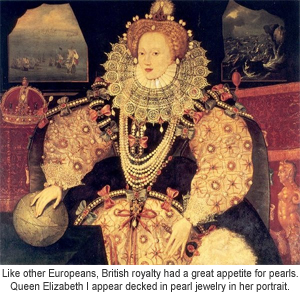Welcome to Keeping The Home: "This false virgin and child cult started up strange practices, such as the rosary. In fact, some statues of Diana (who was the same as Ashtoreth/Semiramis, but in a different tongue) wore rosary beads around the neck."
Candy is nothing if not consistent - consistently wrong.
We already handled how the rosary is scriptural by linking to this wonderful article here. The first part of the Hail Mary prayer is directly from the words spoken to Mary by the Angel Gabriel You can read more about the scriptures that go with saying the Rosary in the article.
The origins of the rosary are not as clear cut as Candy likes to think.
Father Sanders has this informative article:
The origins of the rosary are "sketchy" at best. The use of "prayer beads" and the repeated recitation of prayers to aid in meditation stem from the earliest days of the Church and has roots in pre-Christian times. Evidence exists from the Middle Ages that strings of beads were used to count Our Fathers and Hail Marys. Actually, these strings of beads became known as "Paternosters," the Latin for "Our Father."
The structure of the rosary gradually evolved between the 12th and 15th centuries. Eventually 50 Hail Marys were recited and linked with verses of psalms or other phrases evoking the lives of Jesus and Mary. During this time, this prayer form became known as the rosarium ("rose garden"), actually a common term to designate a collection of similar material, such as an anthology of stories on the same subject or theme. During the 16th century, the structure of the five-decade rosary based on the three sets of mysteries prevailed.
Tradition does hold that St. Dominic (d. 1221) devised the rosary as we know it. Moved by a vision of our Blessed Mother, he preached the use of the rosary in his missionary work among the Albigensians, who had denied the mystery of Christ. Some scholars take exception to St. Dominic's role in forming the rosary. The earliest accounts of his life do not mention it, the Dominican constitutions do not link him with it and contemporaneous portraits do not include it as a symbol to identify the saint.
It occurred to me that Candy et al may not even know what a Rosary looks like!
Here are some links to some beautiful rosaries- note that they all have crucifixes - crosses with the crucified Christ on them - something Candy never mentions in any of her screeds.
Garden of Grace Rosaries
Catholic Company
Clearly Catholic
Rope Rosaries
Incidentally, the early Asian, Mesopotamian, African and European cultures weren't the only ones to make and wear beads- so did the ancient North and South American Indians - beads certainly aren't reserved just for Catholics!!
Incidentally- famous Protestant ladies also wore beads!

6 comments:
Why reference the Virgin Queen in this post? No one should emulate her "purity."
Rosary falls into the "don't knock it 'til you try it" category.
"Why reference the Virgin Queen in this post?"
i thought I was clear on that!
I had read in Kevin Orlin Johnson's book that one of the origins for the rosary was that some of the early hermits and religious would recite all 150 Psalms. The laity wanted something similar, but because they didn't have all 150 memorized, they would recite the Our Father, or, eventually, the Angelus from Scripture (later becoming just the Hail Mary, if I'm remembering all this correctly). The five decades x 3 sets of mysteries (before the addition of the Luminous mysteries) totaled 150 prayers, just like there are 150 Psalms.
I thought the connection was cool. If I'm remembering it correctly, that is. LOL.
Elena, I'm not sure that I understand the posting of that "Is Praying the Rosary Scriptural" link. It seems to refute a lot of Marian theology. Could you help me out?
You helped me out Brookie- wrong link! It's fixed now. Thanks for pointing it out.
Ah.
Thanks for asking the question Brookie. I was scratching my head over that one too, but thought maybe the reference to 'this wonderful article' was just Elenas sardonic humour!
Post a Comment